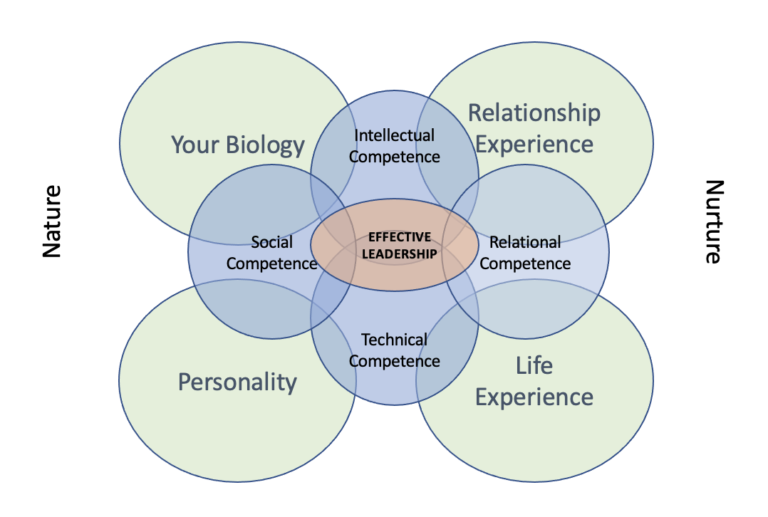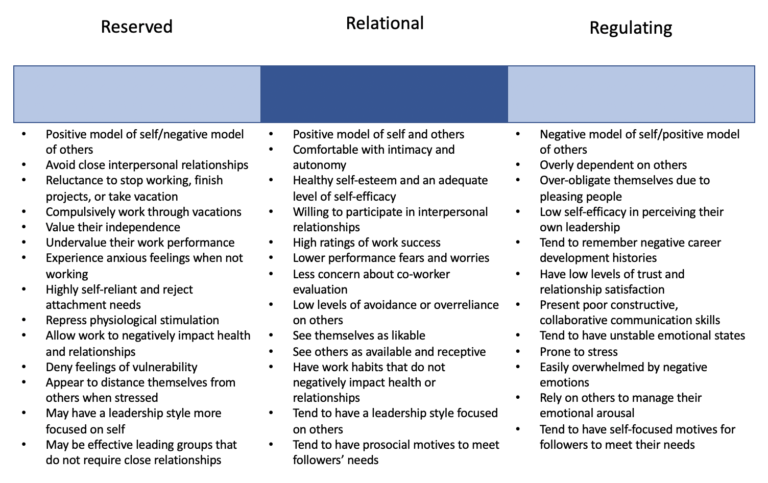Personnel Today cited research by Gartner that indicated approximately 50% of leaders do not feel equipped to lead their organizations, HR leaders believe leadership candidates are immature and not prepared to lead, and only 15% of executives feel their HR teams are effective in developing leaders. This cycle of underperformance and lack of support for executives increases the risk of organizational failure and puts America’s economy in jeopardy.
A recent article from McKinsey & Company argued workers’ job satisfaction is greatly influenced by employees’ relationship with their manager, and workers with good leadership are significantly more satisfied with their job. Yet 75% of workers surveyed indicated the most stressful aspect of their job was their supervisor, and the Gallup Organization stated only one in ten leaders have the leadership traits necessary to create trust, open communication, and transparency.
The Gallup organization reported only 20% of employees feel their performance is managed effectively.
26% of workers feel the feedback they received from their manager increased their engagement and work performance.
1/3 of workers trust their organizational leadership. Gallup noted low trust means a worker is preparing to leave their position.
Leaders set the organizational culture and determine 70% of the variance in employee engagement.
The Baby Boomers are retiring and creating a leadership gap. Training magazine’s survey indicated high, moderate, and low performing organizations reported it takes 13-18 months to develop a proficient leader.
To create growth, CEOs plan to focus on corporate strategies and development, IT improvements, and training, developing, retaining, motivating, and improving the talent of their workforce.

Leaders are neither born nor made. It is a combination of factors, both nature and nurture, that contribute to leader effectiveness. Many have debated for decades what the “secret sauce” of leadership is. We argue it is not just intellect or emotional intelligence/personality that allows one to become a leader. Many of us have worked for incredibly smart people who have no social skills or a charismatic leader who may be socially skilled but technically incompetent. Neither type of leader is able to consistently create an environment that workers can thrive in to create a competitive advantage.
There is good news. We have identified the leadership traits necessary for effective leadership, and we developed a model called the Four Competencies of Effective Leadership that research has shown increase employee engagement, job satisfaction, productivity, perceived leader effectiveness, and better organizational citizenship behaviors (OCBs). The Four Competencies develop from life experiences and natural traits that all individuals may experience, but effective leaders have higher levels of Intellectual, Technical, Social (emotional intelligence and personality), and Relational (based on Attachment Theory) Competence. When a leader exhibits traits of all four Competencies, they may be identified as effective leaders. Our research has shown that employees who rate their manager as effective gave the leader higher ratings in all four Competencies.
The leadership traits of the Four Competencies are measurable, highly correlated, and have strong scale reliability (Cronbach’s Alpha) when measured with the Relationships Effectiveness & Experience Feedback (REEF) assessment. In other words, the REEF is a valid and reliable measure of a leader’s effectiveness as reported by the self, direct reports, peers, and executives. The REEF is a 360-degree feedback assessment that measures observable behaviors to increase a leader’s self-awareness and opportunities for development or growth based on how their coworkers perceive their leadership performance.
“Human beings of all ages are happiest and able to deploy their talents to their best advantage when they are confident that, standing behind them, there are one or more trusted persons who will come to their aid should difficulties arise.”
– Dr. John Bowlby – Founder of attachment theory
All humans have a personality and an attachment style. Our attachment style is the lens through which we perceive relationships. The attachment system is a biologically based desire for proximity to meet humans’ relational needs. We have a biological drive to develop and sustain relationships to meet security and survival needs at home and work. Adults have relational needs that promote or hinder healthy function. Attachment needs must be met for workers to have a secure base or felt relational security that empowers exploration behaviors of their environment, some risk taking, and mastery in their role. For more information about Attachment in the Workplace with references, please click here.
The workplace requires individuals form close relationships to accomplish the tasks and goals of their organization. The leader/follower relationship is significant, because leaders fill an authoritative role that has power and influence over others. Followers often must seek permission or get approval from their boss to pursue their goals, take time off, or ask for a raise. Leaders assign work, measure progress, and give feedback to followers that may or may not be positive. Bosses determine what is acceptable behavior in the workplace, and they accept or reject their followers through their emotions, attitudes, and behavior. Leaders are attachment figures, because work situations tend to activate the attachment behavioral system of their followers. When a threat or uncertainty arises, followers seek attention, responsiveness, and approval from their manager to regain a sense of emotional safety and security. The workplace is filled with threats and uncertainty.

Reserved Leadership style is based on traits of an Avoidant Attachment Style. Individuals with a Reserved Leadership style tend to hold back or withdraw in close relationships. Leaders with a Reserved Style tend to be most effective with teams who need or want little supervision. These leaders typically get high ratings from followers with a Reserved Style, but people with a Reserved Leadership style who lead followers with a Regulating Style may experience significant distress and conflict due to differing relational needs and desires and get poor leadership ratings from their followers.
Individuals with a Reserved Leadership style often tend to get hired and promoted in organizations, because they are focused on work; they do not let interpersonal distractions get in the way of accomplishing their goals. They often use work as a way to avoid relational distress. They may go from being rockstar, individual contributors to management and have significant struggles due to their avoidance of relational expectations from followers and tendency to be highly self-reliant.
Relational Leadership Style is based on traits of Secure Attachment Style. Relational Leaders tend to embody traits of Transformational and Servant Leadership styles. They are able to form healthy relationships and maintain them with direct reports and others. Individuals with a Relational Leadership style tend to be responsive to the needs of their followers, and they create emotionally safe work environments that increase employee engagement, workers’ job satisfaction, and productivity.
Relational Leaders do not avoid close relationships, nor do they become overly reliant on others to manage themselves. They tend to take a balanced approach to life and work, relationships, and the demands of the workplace. They are able to ask for help and feedback from others. Individuals with a Relational Leadership style tend to have stable emotions, comfort with intimacy and autonomy, and enjoy high ratings of effectiveness from their direct reports and others.
Regulating Leadership Style is based on traits of Anxious Attachment Style. Regulating Leaders tend to have a micromanaging style to ensure work is accomplished to their expectations – which may be excessively high due to people-pleasing behaviors. They tend to be overly reliant on others, and they have difficulties managing their emotions and stressful situations. They may get anxious when they feel emotional distance between themselves and others. They often do not trust others, and they tend to be poor collaborators. Constructive communication is challenging for leaders with a Regulating Leadership Style.
Direct reports of a Regulating Leader with a Reserved Style may be overwhelmed and irritated with the high levels of communication from their Regulating Leader (i.e., many texts, emails, or calls) and close supervision, and followers with a Regulating Style may become enmeshed with the leader as they over rely on one another. Coworkers with a Relational Style may find themselves acting more like someone with a Reserved Style to give themselves space from the overbearing tendencies of the Regulating Leader.
How are you showing up as a leader? What message are you sending by the way you communicate and behave? The way you present yourself as a leader when other people are watching? People are always watching when you are a leader. They are getting a message from you and how you are leading one way or another. Is it positive? Is it the message you want to send? Understanding your Relational Leadership style is vital to increase self-awareness and leadership effectiveness.
One is a leader if their followers perceive them to be a leader. That perception is affected by the attachment style a leader brings to work. Many people want to believe our personal and professional lives are separate, but in reality, we take our personality, attachment style, history, and biology everywhere we go. How is yours effecting how others perceive you as a leader?
Dr. Veech’s doctoral dissertation examined the relationship between a leader’s attachment style and emotional intelligence. Results indicated there is a strong correlation between secure attachment and trait emotional intelligence. Secure attachment and emotional intelligence have been shown to be characteristics related to the transformational leadership style – which is a highly valued style in organizations.
A lot is written about leadership and the traits and characteristics believed to contribute to effective leadership. The most vital concept, one’s attachment style, is over-looked and poorly understood. It is often ignored in business textbooks and other leadership development training. Understanding your Relational Leadership style will help you become the leader you want to be.
This article is an example of the confusing message leaders get as they seek to learn about leadership and improve their style. How is an executive supposed to collaborate, be responsive, establish trust, and be appreciative if you believe your followers don’t want relationship, conversation, friendliness, or emotional support? Let’s talk about your Relational Leadership style and determine how you want to show up as a leader and what your followers want and need from you.

This article is an example of the confusing message leaders get as they seek to learn about leadership and improve their style. How is an executive supposed to collaborate, be responsive, establish trust, and be appreciative if you believe your followers don’t want relationship, conversation, friendliness, or emotional support? Let’s talk about your Relational Leadership style and determine how you want to show up as a leader and what your followers want and need from you.